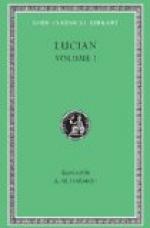Today the United States may be traversed from end to end, and not a single buffalo will be seen, and nothing remains to even indicate their presence but the deep, well-trodden paths which they made years ago. Rain has not been able to wash away these traces, and they are counted among the “features” of the prairies, where the bisons once roamed in undisturbed glory. It was a difficult task for the Government to gather the last remnants, about 150 to 200 head, to stock Yellowstone Park with them, and to prevent their complete extinction.
Undoubtedly, the buffalo was the most stupid animal of the prairies. In small flocks, he eluded the hunter well enough; but in herds of thousands, he cared not a whit for the shooting at the flanks of his army. Any Indian or trapper, stationed behind some shrubs or earth hill, could kill dozens of buffalo without disturbing the herd by the swish of the arrow, the report of the rifle, or the dying groans of the wounded animals. A general stampede ensued at times, which often led the herd into morasses, or the quick-sand of the rivers, where they perished miserably. The destruction was still greater when the leader of the herd came upon some yawning abyss. Those behind drove him down into the deep, and the entire herd followed blindly, only to be dashed to death.
The very stupidity of the bison helped to exterminate the race, where human agency would have seemed well nigh inadequate.
Among the large game of the continent, the bison was the most important, and furnished the numerous Indian tribes not only with abundant food, but other things as well. They covered their tents with the thick skins, and made saddles, boats, lassoes and shoes from them. Folded up, they used them as beds, and wore them around their shoulders as a protection against the winter’s cold. Spoons and other utensils for the household could be made from their hoofs and horns, and their bones were shaped into all kinds of arms and weapons. The life and existence of the prairie Indian depended almost entirely upon that of the buffalo. There is no doubt that the Indians killed many buffaloes, but while the damage may have been great, there was not much of a reduction noticeable in their numbers, for the buffalo cow is an enormous breeder.
Conditions were changed, however, when the white man arrived with his rifle, settled down on the shores of the Atlantic Ocean, and began to drive the aborigines of the American continent further and further West. With this crowding back of the Indians began that also of the buffalo, and the destruction of the latter was far more rapid than that of the former.




